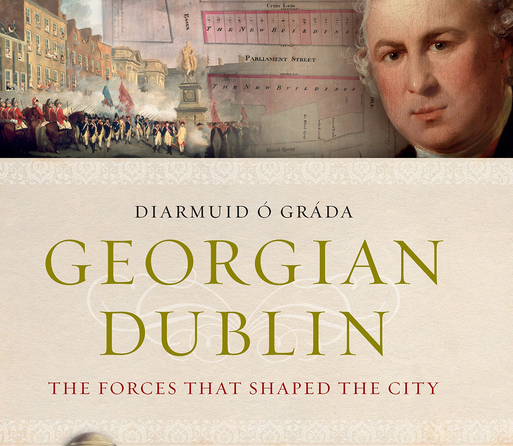Georgian Dublin. The Forces that Shaped the City
Review

Georgian Dublin. The Forces that Shaped the City, Diarmuid O Grada, Cork University Press, 2015, hardback, 400 pp., £35.00, ISBN 9781782051473
Diarmuid O Grada, a planning consultant and occasional lecturer in planning at University College Dublin, offers a fresh perspective in this lively revisionist study which challenges traditional depictions of Georgian Dublin as a city of red-brick squares and elegant drawing rooms. His lavishly illustrated and well-structured book explains how Dublin’s antiquated medieval structures of local government and an urban infrastructure which had changed little since medieval times consequently struggled to cope with the problems of phenomenal population growth during the Georgian era when the number of Dubliners trebled and the city proved quite unprepared for the urgent challenge of feeding and housing so many people. Moreover, he also explores how Dublin’s role was also transformed after 1801 from ‘the bastion of an English colony into that of the Irish capital’ following the Act of Union of 1800-01.
Drawing on a wide range of sources, including previously neglected newspapers and parish records he explores graphically the processes of urbanisation at work, comparing conditions of public health in Dublin with those in other Irish cities such as Cork, where as late as 1805 the public sewers were blocked and where the accumulated mounds of manure formed a serious traffic hazard. Indeed, the problems were no less evident four decades later when the condition of North Main Street continued to be described as alarming. He also makes comparisons with contemporary English cities such as Liverpool, where streets were reputedly narrow and dirty in the 1760s and where even after a substantial proportion of the streets were paved by 1795 some remained unimproved into the 1820s. The situation was no less alarming in Manchester, where the streets in 1795 were considered no better than a common dunghill, whilst in Edinburgh the signal provided by the town guard beating a drum each night at 10.00 p.m. as a warning to residents to return home was also taken as an opportunity for the emptying of chamber pots out onto streets.
He also includes detailed appendices, one identifying brothels operating in eighteenth-century Dublin and others tabulating admissions to Dublin hospitals. The author contends that by the early nineteenth century Dublin was becoming increasingly polarised, ‘horizontally by class and vertically by religion’, as affluent residents sought more pleasant suburban surroundings. His study effectively penetrates through the façade of Georgian architecture to probe the experience of urban life for all sections of the community and will be welcomed by architectural and urban historians as well as the general reader.

